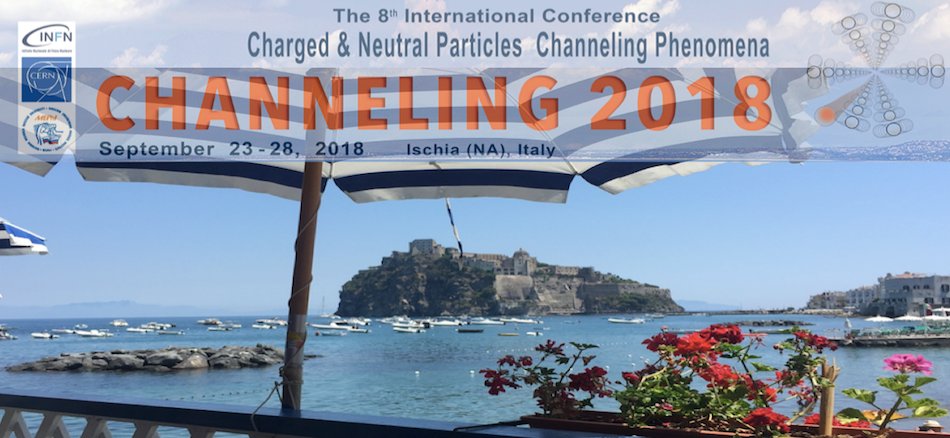Speaker
Dr
Timur Tukhfatullin
(National Research Tomsk Polytechnic University)
Description
Half-wavelength crystal (HWC) is a thin crystal, when a channelled particle experiences only one collision with crystallographic plane during penetration through a HWC. Recent experiment [1] demonstrated 2 MeV protons mirroring by thin silicon HWC. More recently, the mirroring effect was observed for 400 GeV protons at CERN-SPS [2]. The existence of mirroring effect using HWC in the case of negative charged particles was recently demonstrated at the SAGA-LS Facility using 255-MeV electrons and thin (HWC) Si crystal [3]. The HWC effect is explained by computer simulations as a sequence of specific trajectories of planar channeled particles governed by one-dimensional periodic potential of crystallographic planes.
The perspective atomic physics experiments (including crystal targets) with relativistic heavy ion (RHI) beams are the part of Super-FRS Experiment Collaboration program [4]. The critical channeling angle depends on three parameters of RHI beam: proton number Z, neutron number N and beam energy E (MeV/u), and one crystal parameter U0 – potential energy of a unit charge in the field of atomic plane (of order of 20 - 50 eV for planar channeling).
Here, we present the results of computer simulations of RHI penetration through a HWC using computer code BCM-2.0 [5]. According the simulations, the RHI beam deflection angle through the HWC mirroring effect is of order of critical channeling angle θc. Moreover, simulations demonstrate the sensitivity of HWC-RHI channeling and mirroring effect to the isotope mass (N value). Based on simulations, we discuss possible applications of HWC-mirroring of RHI beams: as effective beam deflector similar to high-energy particle physics [2] and even more exotic ones, like Z filter, velocity (E) filter, isotope mass (Z+N) filter.
References
1. V. Guidi, et al., Phys. Rev. Lett. (2012) 108 014801
2. W. Scandale et al., Phys. Lett. B (2014) 734 1
3. Y.Takabayashi, Yu.L.Pivovarov, T.A.Tukhfatullin Phys. Lett. B (2015) 751 453
4. H. Geissel, O.V. Bogdanov, C. Scheidenberger, Yu.L. Pivovarov, N. Kuzminchuk-Feuerstein, E.I. Rozhkova, T.A. Tukhfatullin, and the Super-FRS Experiment Collaboration. GSI SCIENTIFIC RE-PORT 2016 RESEARCH-NUSTAR-FRS-8, p. 179 DOI:10.15120/GR-2017-1
5. S.V. Abdrashitov, O.V. Bogdanov, B. Korotchenko et. al., Nucl. Instrum. and Meth. B 402 (2017) 106-111
Summary
Here, we present the results of computer simulations of RHI penetration through a HWC using computer code BCM-2.0. According the simulations, the RHI beam deflection angle through the HWC mirroring effect is of order of critical channeling angle θc. Moreover, simulations demonstrate the sensitivity of HWC-RHI channeling and mirroring effect to the isotope mass (N value). Based on simulations, we discuss possible applications of HWC-mirroring of RHI beams: as effective beam deflector similar to high-energy particle physics and even more exotic ones, like Z filter, velocity (E) filter, isotope mass (Z+N) filter.
Primary author
Dr
Timur Tukhfatullin
(National Research Tomsk Polytechnic University)
Co-authors
Prof.
Christoph Scheidenberger
(GSI Helmholtzzentrum fuer Schwerionenforschung GmbH)
Dr
Hans Geissel
(GSI, Darmstadt, Germany)
Dr
Natalia Kuzminchuk-Feuerstein
(GSI, Darmstadt, Germany)
Dr
Oleg Bogdanov
(LNF&TPU)
Prof.
Yury Pivovarov
(National Research Tomsk Polytechnic University)

